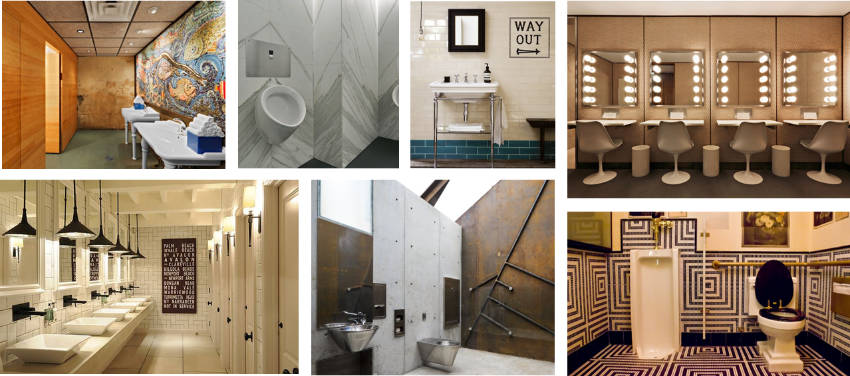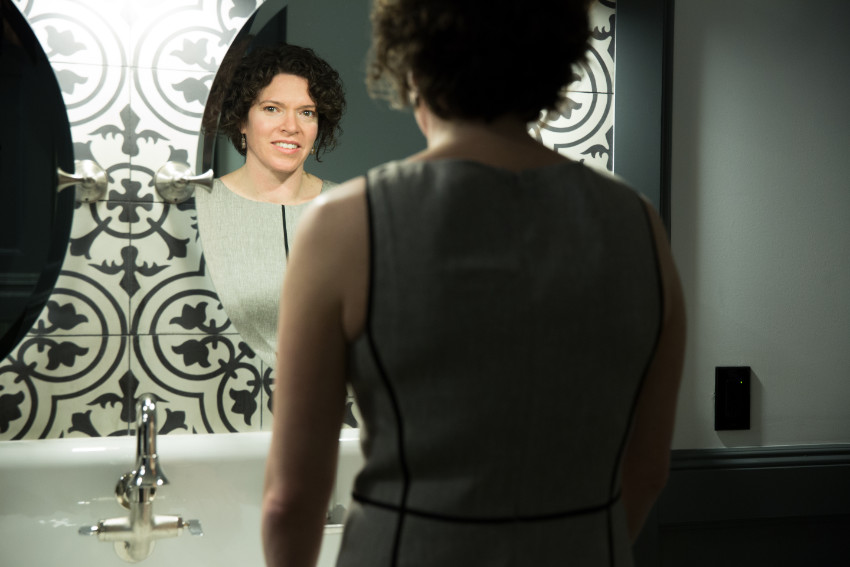People are sensors, constantly dialed into their surrounding environment for clues about everything from the primal mandates of safety, to the psycho-social basics of “how I’m perceived” and “what people think of me”. This general — yet fundamental — insight into the self-perceptiveness of humans is one of the factors that has guided the transformation of the physical workplace.
Now, the central design principle of the workplace is no longer purely utilitarian, in which workers are objects in a cold calculus of efficiency, but is rather a design principle that is self-aware and occupant-centric. User-experience driven design principles intend to be sensitive to not only the current dynamics of the work-life continuum, but also the immutable characteristics of human nature.
As a result, work environments are now being designed to facilitate various forms of visual, verbal, and nonverbal social interactions between coworkers. It is based on this logic that amenities like the food pantry have occupied the central focus of office managers and designers alike. Food becomes a central hub of activity in workplaces, providing a site where chance interactions and encounters can frequently occur between coworkers. In short, we congregate around food and beverages. However, while substantial interest has been paid to the food spaces within offices, much less attention has been paid to the restroom.
Going to the restroom is, like eating food, a necessary element of everyone’s life and work dynamic. With this in mind, it will come as little surprise that thoughtful attention to the design and management of restrooms is more significant than often recognized. It offers the ultimate opportunity for employers and office managers to “walk the talk” of a high performance work environment.

In contrast to the lofty declarations of mission statements that are both easy to craft and then to ignore, investments in spaces are seen as more transparent reflections of managers’ actual perspective. In this sense, the design and upkeep of a restroom plays a crucial role in shaping the kind of professional relationship that is formed between managers, employees, and clients.
One study shows that the organization that provides a bathroom that is thoughtfully designed and features materials that wear well will be more positively evaluated than those that don’t. In this light, poorly designed and managed spaces reflect poorly on the individuals and larger organization that provide them. Perhaps the most salient example of this is in the restaurant industry, where customers invoke the state of the restroom as evidence to substantiate their good or bad experience. This realization has reemphasized the importance of designing and managing a space like the restroom from the perspective of the user.
The multisensory experience
Part of understanding the user experience of a restroom involves recognizing that the socio-spatial characteristics of the restroom are nuanced because user assessments rely on multisensory information. Visually, the color of restroom surfaces is consequential. In one Psychological Science study, it was found that very light colors, and especially white, evoke thoughts of cleanliness, making it a good color choice for public bathrooms.
However, the caveat of lightly colored bathrooms is that dirt is clearly visible. For this reason, public restrooms should utilize materials that are less likely to show dirt and are easy to clean. While people rely heavily on visual data, it is important to consider the other senses that constitute the sensorium of the restroom experience. Smell can negatively affect an occupant’s perception of cleanliness. When people are disgusted by restroom odors for example, they are better at noting impurities on surfaces.
Furthermore, in terms of social perception, having people who we know connect us to the smells of the restroom can be anxiety provoking, and so we prefer restrooms that help protect our anonymity. These consequences of the olfactory experience highlight the importance of designing restrooms that are well ventilated. Beyond smell, people also tend to not want to hear each other while using the restroom. Occupants want a bathroom stall that functions as a site of private refuge.
Part of providing this privacy involves creating the right acoustic atmosphere. The coworking giant WeWork is tuned into a number of design features that respond to how a user experiences the restroom acoustically. For one, WeWork utilizes full height partitions and doors between stalls as a way to fortify the perception of privacy in the restroom. In order to further create an illusion of privacy, WeWork installs speaker systems in their restrooms to create audio sanctuaries that allow one to forget that he or she may have company next door. This design intervention is supported by the American Restroom Association, which found that white noise or background music in bathrooms increases user perceptions of privacy.
Creating a sense of privacy in restroom stalls also fits the reality of workplace behavior. Studies have shown that many employees are actually retreating to toilet stalls to work. In these private restroom refuges, people are free of the distractions of open offices and feel secure enough to let their minds wander. It is therefore important that bathrooms have good Wi-Fi access and that shelves are available for idle laptops or phones.
Restroom allocation
Designers and managers can also think not just about the experience of occupying a restroom stall, but also the process of getting there. One of this generation’s most mythologized and revered business leaders, Steve Jobs, recognized this potential to use restroom allocation as an opportunity to social engineer interaction among employees.
At the Pixar headquarters in Emeryville, Calif., Jobs prescribed that there only be one set of restrooms to force coworkers from across the organization to associate and intermingle. This design intervention also has the potential to help employees feel more connected to an organization because it exposes those traveling employees to the activities of work groups with whom they’d otherwise be unfamiliar.
The allocation of bathrooms can also have gendered consequences. For example, when restrooms are gender-specific and the facilities for each gender are located close to one another, conversations among mixed-gender pairs traveling to their respective bathrooms are likely. Additionally, mixed-gender discussions are likely with non-gendered bathrooms, wherever they’re located. Meanwhile, when bathrooms are gendered but placed further apart, same gender discussions are encouraged instead.
Going to the restroom is, like eating food, a necessary element of everyone’s life and work dynamic. With this in mind, it will come as little surprise that thoughtful attention to the design and management of restrooms is more significant than often recognized.
According to Rhymer Rigby, who wrote a 2004 Financial Times article on the subject, the layout of restrooms in the workplace can also encourage or discourage physical activity among employees, which has repercussions for their physical health. A floor plan with a few centrally located bathrooms promotes more walking by employees than one with a larger number of distributed restrooms. This health and wellness perspective of restroom allocation departs dramatically from the early 20th century utilitarian management theories that were invoked in the recent New York Times article that suggested that the ill placement of a water fountain translates to thousands of wasted steps, and thus squandered revenue, per year.
Beyond the workplace, public restroom allocation within the larger urban fabric is a major challenge facing cities. With a lack of free restroom access bar the occasional Starbucks, a membership-based start-up called Looie is trying to fill this service gap in walkable cities like New York City. Looie members that pay a monthly subscription fee of $25 per month receive a key with access to a network of clean state of the art restrooms. Although Looie may be helping to unlock underutilized restroom facilities, this solution to an urban infrastructural deficit is only a realistic option for a slim segment of New Yorkers with sufficient disposable income.
Feeling at home: Deinstitutionalization of the workplace restroom
We see trends in the design of restroom as fitting into the fold of the larger workplace transformation trends. With more shared office spaces being offered for more affordable prices, there is now a consumerization of office space and amenities that is inciting a preference for a less institutional aesthetic. It is precisely the utilitarian and institutionalized aesthetics of the traditional office place that has become an existential metaphor for the, dull white-collar rhythm of life. As a result, workplace restrooms are experiencing a convergence of design influences from the hospitality and retail sectors to respond to the user preference for a restroom sensory experience that is less institutional and more residential.

This is the challenge that Devin Vermeulen, a designer at WeWork, is currently tackling. For example, there aren’t a lot of attractive commercial restroom appliances on the market, he said.
“It would be nice if someone created a line that had a more residential, personal touch to them rather than like a YMCA or something,” he added. “Those kinds of things just add a more personal, considered touch as opposed to a built-in pump on the side of the counter. It doesn’t feel like you’re being cared about. It feels like the bare minimum of effort was put in. People psychologically think about how they’re being treated in their consideration of their employer.”
Vermeulen and WeWork are hyperaware that the design of the restroom is a strong platform to communicate their organization’s brand and values to occupants. Part of WeWork’s algorithm for manufacturing exceptional restrooms is to satisfy these criteria:
- Pure privacy: Full floor-to-ceiling partitions, speaker system
- More of a residential feel: Utilize kooky wallpaper, old newspapers, and comic books
- Beyond the basics: The provision of Wi-Fi access, bag hooks, phone rests, and air freshener that are well supplied, accessible, and in the right place.
- Looking your best: The provision of full length mirrors, space (besides the sink) for hair and makeup, free mouthwash, and lint rollers
- Full support: Signs like the ones found in hotels that explain that anything that you might be missing is available from the concierge/community manager
Restroom design and maintenance offers a vital opportunity for office managers to use their space as a tool to both improve user experience and increase organizational performance. What is phenomenal about the bathroom is that it can be both a tool to increase interactions and associations among employees across a large organization, as well as provide a quiet refuge to escape the office for a moment and gain perspective.
This article was originally published at Work Design Magazine, on March 8, 2016.

